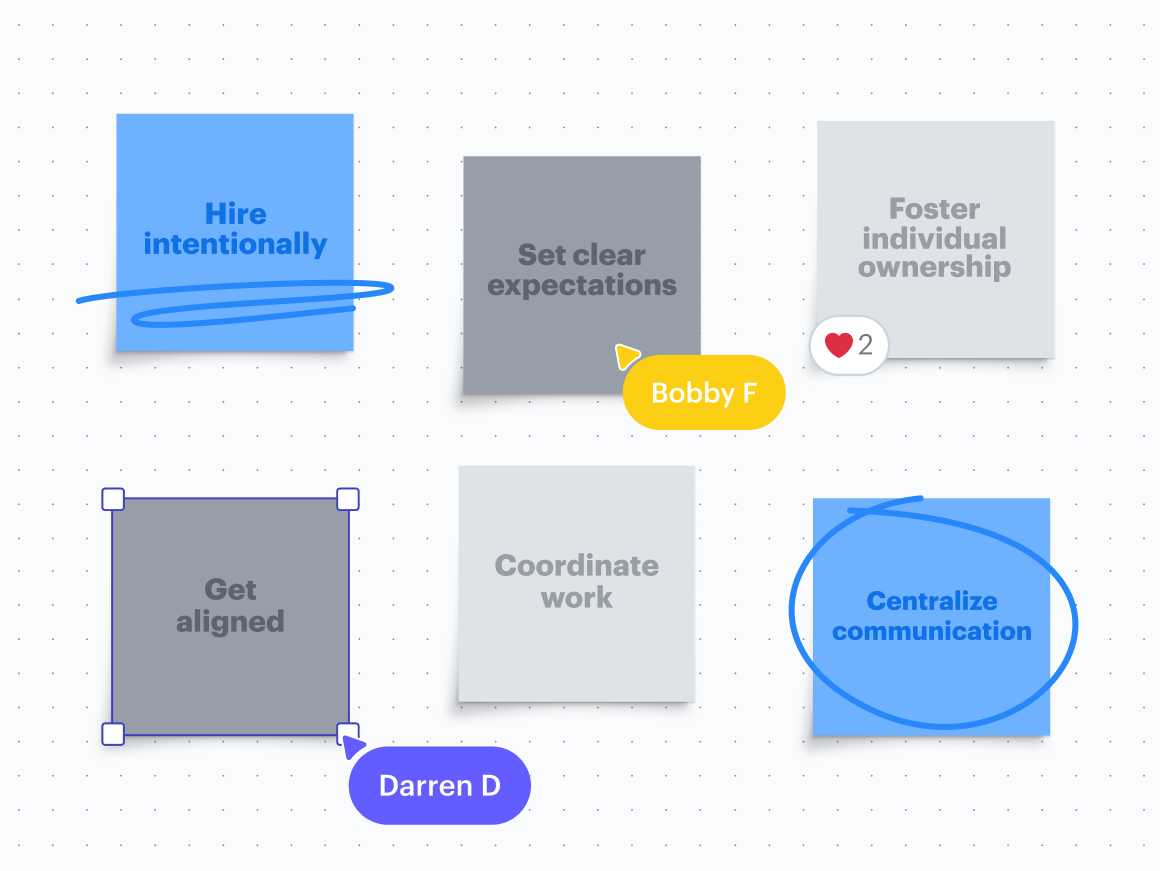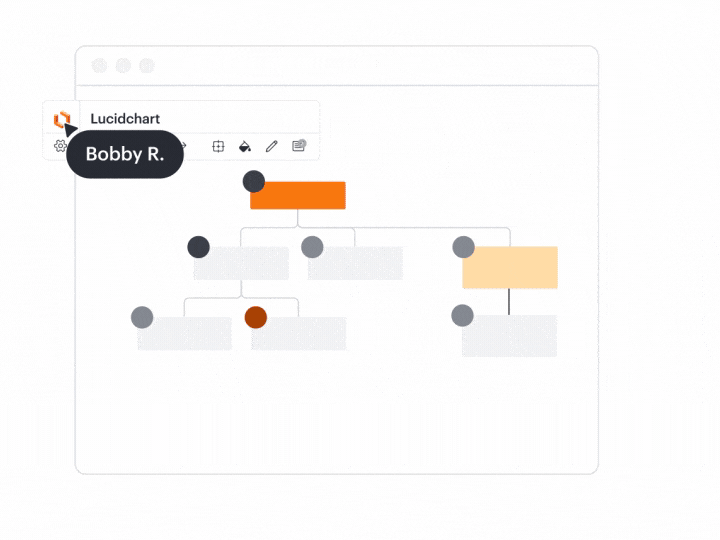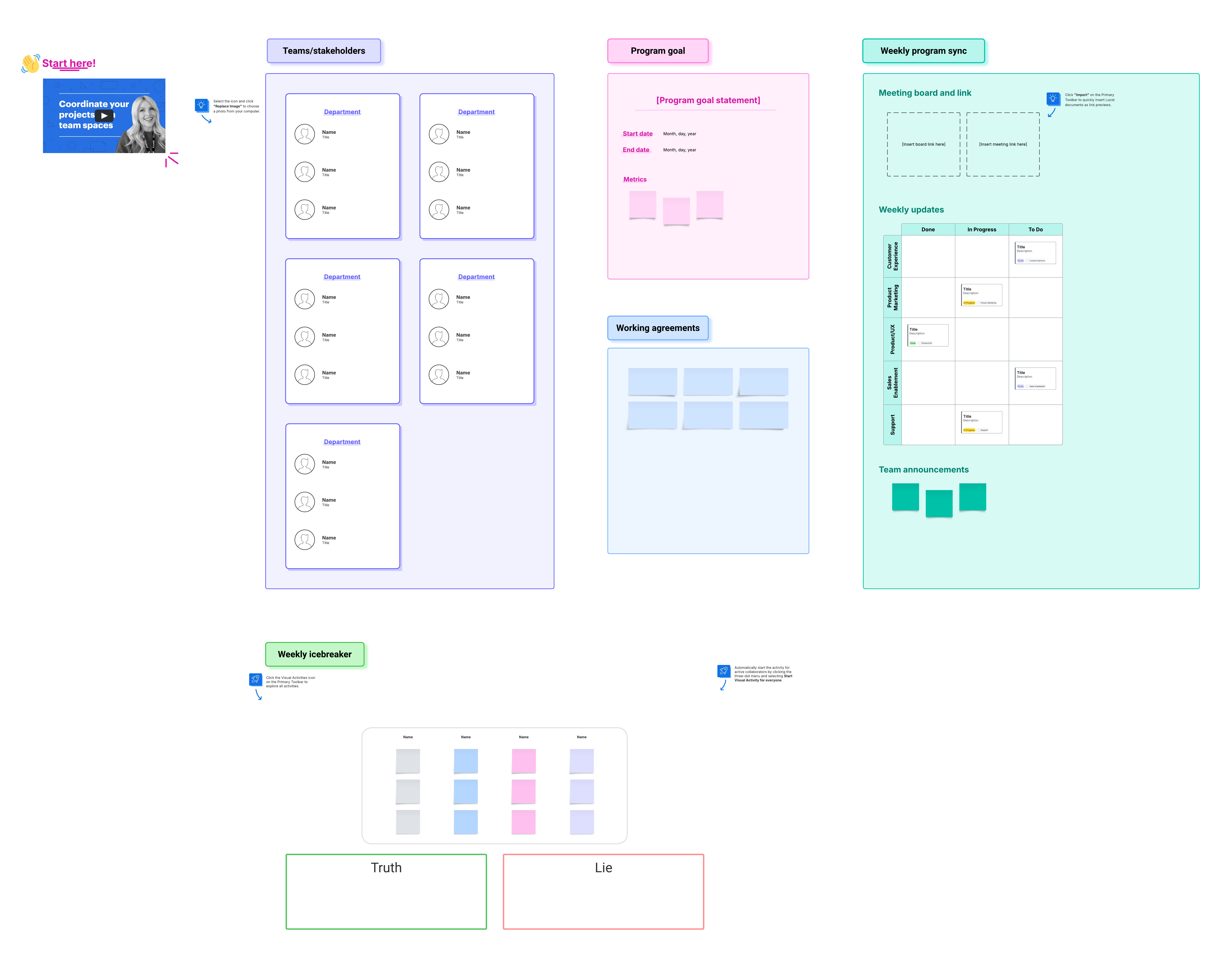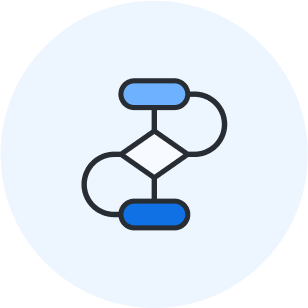
How to build high-performing engineering teams
Reading time: about 7 min
It’s obvious that leaders want their teams to succeed. What’s less obvious is how to make that happen. Building a high-performing team, especially in engineering, is no small task. There are countless moving parts to manage, from technical decisions to team dynamics.
We had the opportunity to speak with Andy Hurd, senior director of engineering at Lucid, to get his perspective on building high-performing engineering teams. He shares practical insights for leaders on how to build trust, strengthen team culture, and consistently produce great work.
In this post, we’ll define what a high-performing team is, along with provide six actionable tips for building one.
What is a high-performing engineering team?
A high-performing engineering team does more than meet deadlines. It operates with trust, autonomy, and communication.
-
Trust: Team members are trusted to work independently and make good decisions without micromanagement. They understand broad business goals and use that to drive a deeper purpose behind their assignments.
-
Autonomy: The team is empowered to work independently and efficiently. They have a deep level of competence and work both collaboratively and asynchronously.
-
Communication: Team members surface obstacles when they arise and communicate project updates often without being asked. They understand the importance of alignment through every stage of the workflow.
“Managing an engineering team that is high performing is about understanding the relationship between trust that’s given and received. As a manager, there may be a tendency to micromanage someone new to a skill. They could easily get it wrong. While careful coaching, communication, and awareness are helpful, it’s important to provide space that conveys trust and creates autonomy to ensure you’re maximizing your team efforts.”
6 ways to build and manage a high-performing engineering team
As a manager, autonomy, communication, and trust can be challenging to foster across a team with multiple projects running simultaneously. Here are six ways to set the tone and build a team that is not only high performing but also connected and can sustain high performance in the long term.

Hire intentionally
The engineer onboarding process can be tedious. Not only is it essential to hire people with the technical skills needed for the job but also to hire competent team members. It’s hard to gauge how trustworthy or communicative someone is in an interview. That’s why it’s crucial to ask questions that give valuable insight into their working and communication styles.
Here are some ideas for questions to ask:
-
Tell me about an experience where you took the lead on a project. How often did you communicate, what methodology did you use (Scrum, Kanban, etc.), and how did you make sure everyone had the context they needed for their tasks?
-
When was a time that you had a disagreement with a stakeholder? How did you approach the situation, and ultimately, how was it resolved?
-
In your previous or current position, how have you gone above and beyond the expectations of your role?
-
Tell me about a time you made a mistake on a project. How’d you own up to it, and what did you do to fix the situation?
Set clear expectations
According to The Way We Collaborate Report, 45% of teams struggle with clarity and direction. For engineering teams to thrive, managers must establish clear expectations and hold team members equally accountable. One helpful way to do this is by creating a team charter. A team charter defines a team’s purpose, responsibilities, and objectives. It also clarifies individual roles and provides information about each team member, such as location and typical working hours.

“Having a team charter for our cross-functional teams that defines roles and expectations has been critical for managing large launches.”
For teams looking to increase organizational agility, no matter the framework, Lucid’s Agility Accelerator is a great way to establish a home base and stay updated as a team. You can also get a pulse on how your team is doing and more accurately surface any issues.

Learn more about the Agility Accelerator.
See nowFoster individual ownership
One of the greatest gifts you can give your team is empowering them to take ownership of their work. This can look different depending on factors like role, experience, and more. For example, maybe you encourage a team member to lead a brainstorm to discover new features for the product they helped build, or maybe you invite them to facilitate a post-mortem on a project they just finished.
As a leader, your role isn’t micromanaging every move but fostering an environment built on autonomy and trust. Look for opportunities for growth and provide team members with guidance and support to help them achieve their goals.
A team that takes responsibility and owns its work doesn’t wait to be assigned tasks to take action. They look for areas of optimization, communicate early on, and prioritize integrity. As a leader, it's up to you to model this mindset and recognize it among team members.
Get aligned
Creating proper documentation is one of the many components of building an engineering team. Without good documentation, misalignment and confusion can creep into team dynamics. Many people dread creating documentation because it is time-consuming, but it is necessary. Documentation helps streamline workflows, optimize processes, and keep your organization aligned.
Here are a few of our top tips for documentation:
-
Create living documentation that evolves with your organization, and keep it updated so that it remains useful and integrated.
-
Use visuals to communicate complex processes and systems.
-
Share your documentation with your teams. Ensure all relevant information is visible and accessible so that people have the context they need to do their jobs.

Explore more tips and templates for effortless documentation.
See nowCoordinate work
One of the biggest challenges an engineering leader faces is effectively coordinating work across teams. This challenge is especially amplified for dispersed teams, where traditional communication channels can lead to misunderstandings and silos. To combat this, incorporating a visual collaboration platform, like Lucid, into your workflow is vital.
Lucid’s features, such as universal canvas, empower teams by providing seamless access to Lucidchart’s intelligent diagramming and Lucidspark’s dynamic whiteboard. With the click of a button and without ever leaving the canvas, engineers can access necessary diagramming and whiteboard features through every workflow stage. This streamlines work and ensures everyone is on the same page.

Centralize communication
Successful engineering teams thrive on open and honest communication. Having a central space for all team interactions is necessary to reduce project disruptions and keep everyone up to date.
“Having a shared space for communication, reporting, and progress is so useful for keeping people on the same page. Otherwise, people anchor on outdated information and waste effort towards something irrelevant.”
Here are a few ways to boost your communication strategy:
-
Visual Activities: Quickly gather an accurate picture of how your team is doing. Prioritize next steps for projects and efficiently gather feedback.
-
Integrations: Integrating your tech stack tightens communication, reduces confusion, and keeps processes running smoothly.
-
Team hubs: Team hubs are another powerful tool in Lucid for coordinating work. They house team documentation and project information in one central location. Within your team hub, you can set up a home base for teams to collaborate.

Building and managing a high-performing team takes diligence and trust. By establishing clear expectations, developing a mindset of continual improvement, and leveraging intelligent tools, leaders cultivate an empowering environment that contributes to the team’s long-term success.

See how Lucid’s own engineering teams use Lucid.
Read nowAbout Lucid
Lucid Software is the leader in visual collaboration and work acceleration, helping teams see and build the future by turning ideas into reality. Its products include the Lucid Visual Collaboration Suite (Lucidchart and Lucidspark) and airfocus. The Lucid Visual Collaboration Suite, combined with powerful accelerators for business agility, cloud, and process transformation, empowers organizations to streamline work, foster alignment, and drive business transformation at scale. airfocus, an AI-powered product management and roadmapping platform, extends these capabilities by helping teams prioritize work, define product strategy, and align execution with business goals. The most used work acceleration platform by the Fortune 500, Lucid's solutions are trusted by more than 100 million users across enterprises worldwide, including Google, GE, and NBC Universal. Lucid partners with leaders such as Google, Atlassian, and Microsoft, and has received numerous awards for its products, growth, and workplace culture.
Related articles
The engineer’s toolkit for effortless documentation
To get you started with collaborating visually and documenting as you go, we’ve compiled a toolkit of templates for common engineering use cases.
5 ways engineering teams can streamline project documentation with Lucid
Get insider tips on using Lucid for project documentation from Lucid’s senior director of engineering.
3 pain points engineers face and how to overcome them with visual collaboration
We’ll share three pain points that engineering teams face and how Lucid offers lasting solutions to eliminate them.
How Lucid helps engineers maintain accuracy, velocity, and standardization
Read expert insights on how engineers can use Lucid to overcome challenges in accuracy, velocity, and standardization.
